The WRMarketplace is created exclusively for AALU members by experts atGreenberg Traurig and the AALU staff, led by Jonathan M. Forster, Steven B. Lapidus, MartinKalb, Richard A. Sirus, and Rebecca Manicone. WRMarketplace #17-43 was written by Greenberg Traurig Shareholder Stephen B. Lapidus.
The AALU WRNewswire and WRMarketplace are published by AALU as part of the Essential Wisdom Series, the trusted source of actionable technical and marketplace knowledge for AALU members—the nation’s most advanced life insurance professionals.
Thursday, 26 October 2017 WRM#17-43
TOPIC: Part 2 – To Fund or Not to Fund: Non-Qualified Deferred Compensation Plans – Funding Options.
MARKET TREND: As individuals continue to struggle with saving enough for retirement, employer-sponsored retirement plans remain at the forefront of planning discussions.
SYNOPSIS: Non-qualified deferred compensation (“NQDC”) plans are a promise by the sponsoring employer to pay part of an executive’s compensation to the executive at a later date (e.g., upon retirement or other termination of employment). In Part 1 of this series (see WRM No. 17-41), we discussed the tax and ERISA fundamentals of the two main types of NQDC plans: (1) defined contribution and (2) defined benefit. Part 2 reviews a sponsoring employer’s funding options and financial accounting considerations when implementing a NQDC plan.
TAKE AWAYS: Employers have numerous options when funding NQDC plans. With the right funding, as through life insurance, employers can (1) set aside funds to cover anticipated benefit payments without increasing their tax exposure, (2) offer some security to a participating executive that sufficient funds will be available to meet benefit payments, and (3) provide both retirement and death benefits to the executive on a tax-deferred basis.
PRIOR REPORT: 17-41.
NQDC plans are a promise by the sponsoring employer to pay part of an executive’s compensation to the executive at a later date (e.g., upon retirement or other termination of employment). In Part 1 of this series (see WRM No. 17-41), we discussed the tax and ERISA fundamentals of the two main types of NQDC plans: (1) defined contribution and (2) defined benefit. Part 2 reviews a sponsoring employer’s funding options and financial accounting considerations when implementing a NQDC plan.
FUNDING OPTIONS
Pay-As-You-Go. Under this option, the employer does not set aside any funds to pay the future benefits. Instead, the employer simply pays plan benefits to the executives as and when they become due under the plan, directly out of the employer’s cash flow. This option, however, provides no security to the participants that funds will be available later to pay their benefits.
Fund Set-Aside. More often, an employer sets aside assets to create a funding source for the payment of deferred compensation benefits. While these assets must remain subject to the claims of the employer’s creditors in the event of its insolvency, participants will have greater security about future benefit payments than with the pay- as-you-go method.
Employers can select from several options to set aside funds for benefit payments:
Sinking Fund.With this technique, the employer sets aside cash and/or invests in mutual funds and other investments in its own name to provide a source for the payment of the deferred compensation. An issue, however, is that the employer is taxable on the investment gains and income derived from those investments when recognized but is only entitled to a tax deduction equal to those earnings when paid to the executive as benefits under the plan. This mismatch of immediate income recognition but deferred deductions can be costly to the employer.
Life Insurance. Life insurance can provide a solution to the above issues, as employers can acquire life insurance policies insuring plan participants to fund NQDC benefits. Under this approach, the employer owns the policy as “company-owned life insurance” (“COLI”) and is the policy beneficiary. ERISA cases have held that the plan is not considered a “funded” arrangement, as long as the COLI policies remain subject to claims of the employer’s creditors in the event of the employer’s bankruptcy or insolvency. From a tax perspective, several IRS rulings have held that immediate taxation of plan participants is not triggered by funding plans with COLI. Further, the employer is not taxable on the accumulated investment earnings within the policy until they are withdrawn to pay benefits (when the employer also would receive an off-setting deduction for the compensation expense), eliminating the mismatch of the sinking fund option.
- Practical Point: Employers typically purchase variable universal life insurance policies to fund the NQDC plan, since these policies offer numerous investment options that are held mostly through separate accounts protected from the claims of the insurer’s creditors.
As a further benefit, excess life insurance proceeds may remain after payment of the lifetime NQDC plan benefits (“excess COLI proceeds”), which employers may choose to deal with as follows:
- Cost Recovery. The employer can retain the excess COLI proceeds to recover its costs under the plan. To do so, the employer must maintain ownership of the policies until the executive’s passing, even after the executive has received all of his or her NQDC benefits.
- Additional NQDC Death Benefit. The employer could increase the death benefit payable under the NQDC plan and use the excess COLI proceeds for cost recovery or to provide additional benefits to the executive. The executive’s beneficiary under the NQDC plan will be taxed on the excess COLI proceeds in the same manner as the balance of the deferred compensation benefit. The employer, however, will not incur tax on the excess COLI proceeds but will receive an income tax deduction for the additional death benefit payable to the employee’s beneficiaries under the NQDC plan. Alternatively, the increased death benefit could be structured so that it would be paid directly to the employee’s beneficiary as an income tax-free death benefit under a split dollar or death benefit only plan. In that event, the employer would not derive any tax deduction as a result of the payment of the excess death benefit.
Rabbi Trusts. Employers can set aside deferred compensation funds by using a “rabbi trust.” A typical rabbi trust is irrevocable and holds the assets contributed solely for the payment of deferred compensation benefits but subordinate to any claims of the company’s creditors in the event of the company’s insolvency or bankruptcy. As a healthy company is unlikely to face these risks, the approach provides the executive with security that the employer may not use the trust assets for any other business purpose. Most rabbi trusts also are structured to allow some or all the excess assets to be returned to the employer.
For income tax purposes, a rabbi trust is treated as a “grantor trust,” and thus all earnings derived from the assets held in trust are taxable to the employer to the same extent as if those assets actually were owned by the employer. When a rabbi trust is used, the executive defers recognition of taxable income until actual (or constructive) receipt, and the employer is entitled to a deduction when the executive is taxable.
The employer can invest the rabbi trust funds in various investments, including marketable securities, mutual funds, and money market accounts, with the employer taxed on the rabbi trust’s annual earnings.
Alternatively, the employer can invest the funds in life insurance and any growth within the policy will not be taxable to the employer until withdrawn.
Example: Joe, 59 years old, owns a 60-employee business, X Co. He has reinvested most of assets in X Co. over the years, and it represents the majority of his net worth. Joe wants to retire in about 15 years and transfer the business to his son, who already works in the company. Joe’s son Alex, however, will not have the finances to purchase the business from Joe, and Joe’s estate will be subject to estate taxes, based on XCo.’s current value. While Joe has a 401(k) plan and profit sharing plan through the company, they are insufficient for his retirement goals. Further, Joe needs liquidity given his estate tax exposure. Thus, Joe needs a benefit plan that can be selective in terms of participants (so only Joe can benefit), flexible in terms of funding (to accommodate X Co.’s cash flow over time), and offer both a retirement fund and death benefit (for estate tax exposure).
One solution is a NQDC plan providing excess life insurance death benefits. X Co. could set aside funds for the deferred compensation benefits in a rabbi trust, allowing the plan to limit participants to senior management and offer flexible funding. Acquiring permanent life insurance in the rabbi trust is an efficient funding option, since growth in the policy will not result in current income tax to X Co. The policy could be used to provide the additional death benefit that will be needed by X Co. or Joe’s family at his passing. X Co. is a conservative and well- managed company, so Joe is not concerned with having the trust assets subject to X Co.’s creditors and likes the assurance that the trust assets can otherwise only be used to fund his deferred compensation benefits.
The excess death benefit could provide cost recovery to X Co., which would effectively benefit Alex, as X Co.’s successor owner, or be structured to provide an additional death benefit to Joe’s family, as Joe’s beneficiary. In each case, the proceeds generally would be tax-free to the employer if the requirements under IRC §101(j) described below are satisfied, and any benefits paid to Joe’s beneficiary would be taxable at ordinary income rates and deductible by the employer. Alternatively, the arrangement could be structured as a split dollar arrangement, with the excess death benefit being paid directly to Joe’s beneficiary. Under this approach, Joe would be taxable each year on the value of the insurance coverage, and the proceeds payable to Joe’s beneficiary will not incur income tax (and will not be deductible by the employer).
Moreover, if the beneficiary of the excess death benefit is an irrevocable life insurance trust, the amount of that death benefit could be exempt from inclusion in Joe’s taxable estate (although Joe would be deemed to make annual gifts to the trust equal to the value each year of the insurance coverage), which would be a significant benefit to Joe and his family.
COLI FUNDING – TAX TRAPS FOR THE UNWARY
Employers should note that funding NQDC plans with COLI, including when held through a rabbi trust, requires specific steps for implementation to prevent unintended tax consequences. Tax on Death Benefits. Generally, amounts received under a life insurance policy by reason of the insured’s death are excluded from income taxation. However, under IRC §101(j), if a business or related person (an “applicable policyholder”) owns a policy insuring an employee of the applicable policyholder on the date of the policy’s issuance (an “COLI policy”)1, the death benefits will be taxable to the extent they exceed the premiums the applicable policyholder paid for the COLI policy. This includes policies used to fund NQDC plans, which are deemed owned by the business for federal income tax purposes (e.g., policies held in rabbi trusts).
Exceptions. The following exceptions apply to taxation of COLI policy death benefits, if certain notice and consent requirements (below) are met before issuance of the COLI policy:
- Insured as Employee. The insured was (1) an employee at any time during the 12 months before his or her death, or (2) at the time the policy was issued, one of the 5 most highly compensated officers, a 10% or more shareholder or among the highest paid 35% of all employees of the employer, or was a “highly compensated employee” under the rules applicable to qualified plans (generally a 5% or more owner or an employee whose compensation exceeds an indexed dollar amountthat is $120,000 for 2017).
- Death Benefits Paid to Insured’s Heirs. The policy death benefits are either (1) paid to the insured’s estate, family members, or other designated beneficiaries (other than the policy-holder), or a trust for the benefit of any such individuals, or (2) used to purchase an equity (or capital or profits) interest in the applicable policyholder from any person described above.
Notice & Consent. To fall under an COLI exception, before policy issuance, the employee must:
- Be notified in writing that (a) the employer intends to insure the employee’slife and will be a beneficiary of such insurance and (b) the maximum face amount of that insurance,and
- Provide written consent to being the insured and to the fact that the coverage may continue after the insured terminates employment.
The contract must be issued within one year after the employee’s consent or before the termination of the employee’s employment, whichever is earlier.
Reporting & Recordkeeping. IRC §6039I requires that every policyholder owning one or more COLI policies file a return (Form 8925) showing, for each year that the contracts are owned:
- The number of employees of the applicable policyholder and the number insured under COLI policies at the end of the year;
- The total amount of insurance in force at the end of the year under COLI policies;
- The name, address, and taxpayer identification number of the policy holder and the type of business in which the policyholder is engaged; and
- That the policyholder has a valid consent for each insured employee (or, if all such consents have not been obtained, the number of insured employees for whom such consents were not obtained).
Each applicable policyholder also must keep such records as may be necessary for purposes of determining whether the requirements of Code §§101(j) and 6039I have been met.
FINANCIAL ACCOUNTING ISSUES – GET CPAs INVOLVED
For financial accounting purposes, an employer that maintains a defined contribution type of NQDC plan must accrue the employee deferrals and employer contributions and earnings credited to the employee’s account as compensation expense for the accounting period.
The employer’s obligation to provide benefits at some later date under a defined benefit type of NQDC plan must be accrued as compensation expense with interest, in a systematic and rational manner over the employee’s active period of service to the employer.
Earnings for the accounting period on amounts set aside to fund the deferred compensation would be recognized as income for the period, as would the value of the future tax benefit that the employer anticipates deriving when the benefit is paid.
With a rabbi trust, the trust assets should be measured and accounted for in the same way as similar assets owned directly by the employer. The employer reflects the trust assets on its balance sheet and cannot net them against its deferred compensation liability. Earnings on trust assets should be recorded in income, although if the plan is a defined contribution plan, that income usually will be counterbalanced by a corresponding expense resulting from an increase in the deferred compensation liability.2
When funding deferred compensation plans with COLI, the policies generally are accounted for using the cash value method under which: (1) premium payments are expensed; (2) cash surrender value increases are reported as income (or are netted against the premium expense); (3) the cash surrender value of the policy is reported as a long-term asset on the employer’s balance sheet; and (4) when the insured dies, the excess of the policy death benefit over the reported cash surrender value is reported as income. To minimize the financial accounting expense, policies with high initial cash surrender values generally are purchased when insurance is used to fund these programs.
TAKE AWAYS
Employers have numerous options when funding NQDC plans. With the right funding, as through life insurance, employers can (1) set aside funds to cover anticipatedbenefit payments without increasing their tax exposure, (2) offer some security to a participating executive that sufficient funds will be available to meet benefit payments, and (3) provide both retirement and death benefits to the executive on a tax-deferred basis.
DISCLAIMER
This information is intended solely for information and education and is not intended for use as legal or tax advice. Reference herein to any specific taxor other planning strategy, process, product or service does not constitute promotion, endorsement or recommendation by AALU. Persons should consult with their own legal or tax advisors for specific legal or tax advice.
NOTES
1 For this purpose: (1) a “related person” is any person with a relationship to the policy owner as specified in IRC
§§267(b), 707(b)(1), 52(a) or 52(b); and (2) an ‘employee” is a U.S. citizen or resident who is an officer, director or certain highly compensated employees as defined in IRC §414(q). Note that IRC §101(j) does not apply to policies issued prior to April 18, 2006 (“grandfathered policies”) or received in an IRC §1035 exchange for a grandfathered policy unless there is a material increase in the death benefit or other material change to the contract.
2 One concern that an employer might have is that the NQDC plan will create a charge against its earnings. For companies considering an exit or those owned by private equity firms, this may be a “gating” issue.






